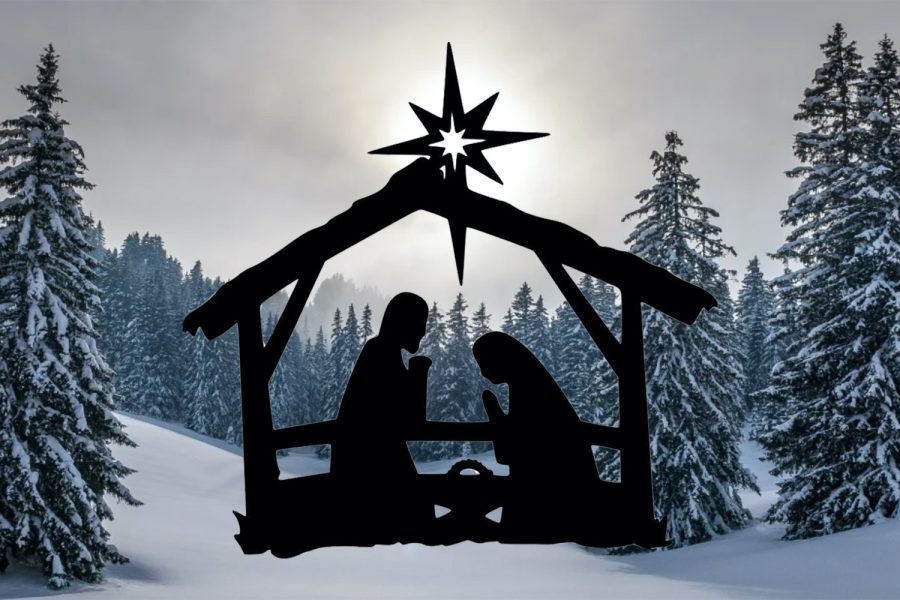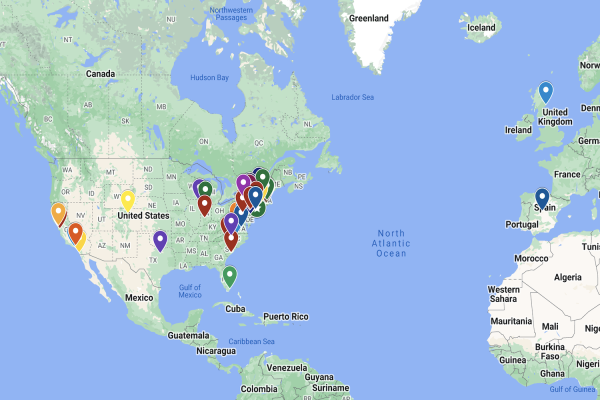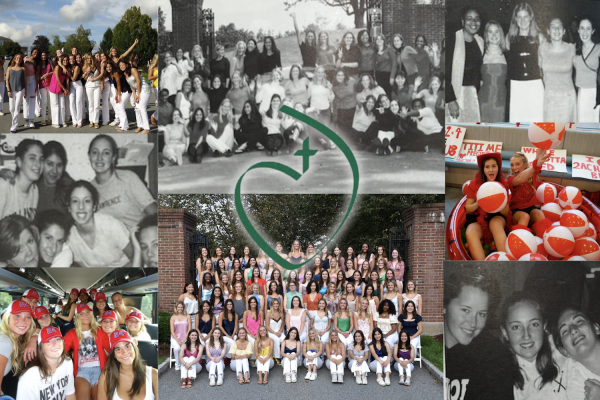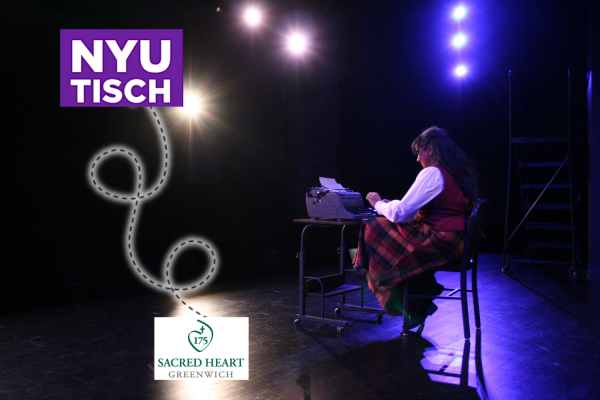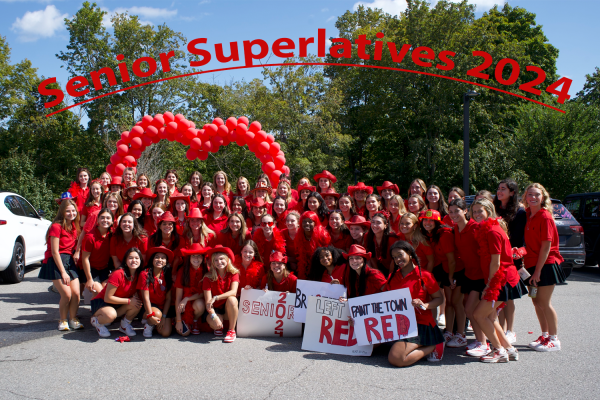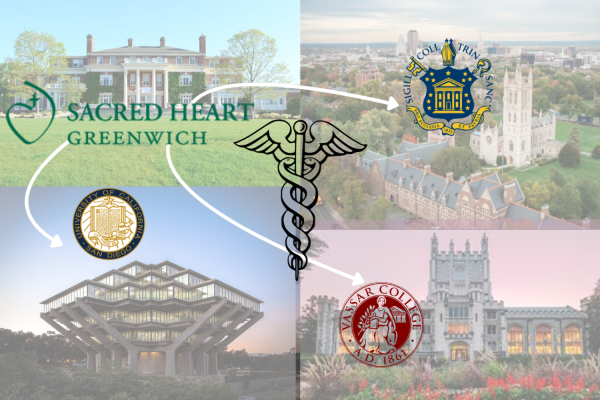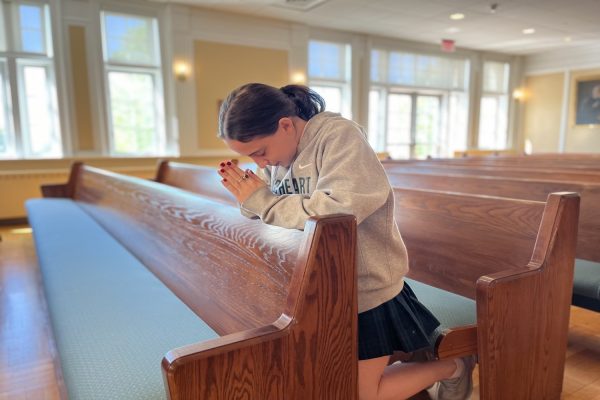The Christmas legacy of the winter solstice
The reemergence of the sun after the dark winter solstice mirrors the birth of Jesus.
The winter solstice in the Northern Hemisphere will occur December 21 at 10:59 a.m. Eastern Standard Time. Religious and traditional celebrations correspond with the event, including the Scandinavian festival of Yule and the East Asian festival of Dōngzhì. Additionally, the winter solstice influenced the development of Christmas traditions and the establishment of the date of Christmas. Mr. Rick Bria, Astronomy Technician at Sacred Heart Greenwich, spoke about the scientific and personal significance of the December solstice.

The winter solstice occurs when the North Pole of the Earth points as far away from the sun as it will during the Earth’s orbit. As a result, the sun travels its lowest path across the sky in the Northern Hemisphere. In Greenwich, Connecticut, December 21 will be the shortest day of the year, with just 9 hours and thirteen minutes of sunlight, according to timeanddate.com. After this date, the days will lengthen until the Northern Hemisphere’s summer solstice in June, according to space.com.
At Sacred Heart, Mr. Bria examines the night sky from the Mary Aloysia Hardey, RSCJ Observatory, educating the school community on astronomy. Mr. Bria explained how the winter solstice affects celestial observation.
“Short days and long nights are great for astronomy,” Mr. Bria said. “Also, any planets that orbit farther from the sun than the earth are highest in the nighttime sky. For example, the full moon and the outer planets are very high in the night sky near the winter solstice, as opposed to June.”
World cultures honor the winter solstice with festivals and traditional legends. In Scandinavian folklore, a witch goddess causes the short, dark days of winter by capturing the sun and moon and hiding them away in a mountain. In East Asia, people welcome the new solar cycle with the Dōngzhì Festival. Dōngzhì is Chinese for “arrival of winter.” The holiday celebrates family and features a traditional meal of rice balls, according to britannica.com.
Some Christmas traditions trace their roots to winter solstice celebrations. For example, Yule was a Scandinavian winter solstice festival. However, in modern usage, the word yuletide, which means “the season of Yule,” is synonymous with Christmas, according to merriam-webster.com. On this holiday, pagans burned a yule log to symbolize the return of the sun, according to school.eb.com. This tradition of the yule log inspired the Bûche De Noël cake, a modern Christmas dessert.
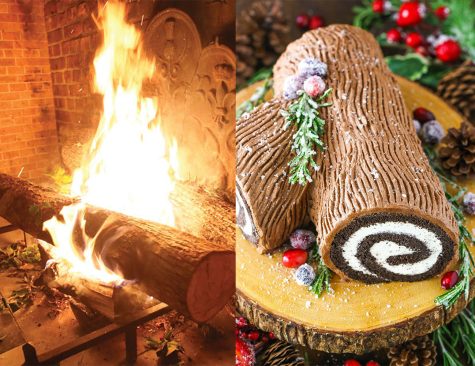
It is likely that even the date of Christmas as December 25 emerged from a winter solstice tradition. On this date, the ancient Romans commemorated the return of the sun after the dark winter solstice with the holiday Dies Solis Invicti Nati, which is Latin for “day of the birth of the unconquered sun,” according to school.eb.com. In modern times, December 25 is the symbolic date for the birth of Jesus, the Son of God.
Aside from religious traditions, the beginning of a new solar cycle continues to mirror the natural cycle of renewal. Some people recognize the winter solstice by providing homemade suet and birdseed to local birds. Fats and seeds support birds in the colder winter months, according to almanac.com. Other people honor the longest and darkest night of the year by turning off all electric light sources and spending the night in candlelight.
Mr. Bria spoke about his symbolic interpretation of the reemergence of the sun after the winter solstice, connecting the occurrence to the birth of Jesus.
“Jesus is the light of the world,” Mr. Bria said. “It is symbolically fitting that after the short and dark days nearing the winter solstice, days become brighter and longer at Christmas and thereafter.”
Featured Image by Avery Kim ’24

Avery is honored to serve as one of the Editors-in-Chief of the King Street Chronicle. After two years on the newspaper’s staff, she has learned countless...

